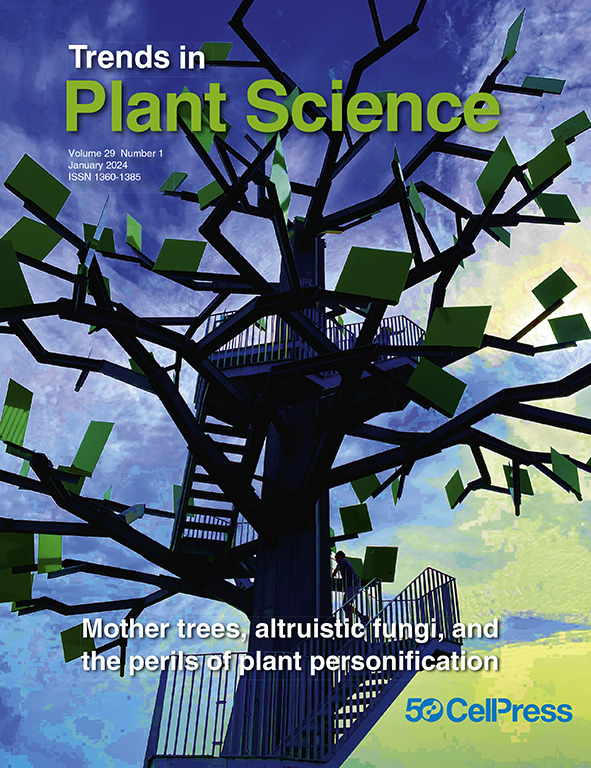蛋白激酶介导的信号通路的调控格局
IF 17.3
1区 生物学
Q1 PLANT SCIENCES
引用次数: 0
摘要
水稻稻瘟病真菌 Magnaporthe oryzae 是研究真菌与植物相互作用的模型。在最近的一项磷酸化蛋白质组学研究中,Cruz-Mireles 等人以 Pmk1 通路为重点,全面分析了 M. oryzae 中与致病相关的磷酸化,整合了多种信号通路并确定了新的毒力因子。这项研究对我们了解真菌的致病机理具有广泛的意义。本文章由计算机程序翻译,如有差异,请以英文原文为准。
Regulatory landscape of a protein kinase-mediated signaling pathway
Rice blast fungus Magnaporthe oryzae serves as a model for studying fungal–plant interactions. In a recent phosphoproteomics study, Cruz-Mireles et al. comprehensively analyzed pathogenesis-related phosphorylation in M. oryzae with a focus on the Pmk1 pathway, integrating multiple signaling pathways and identifying new virulence factors. This study has broad implications for our understanding of fungal pathogenesis.
求助全文
通过发布文献求助,成功后即可免费获取论文全文。
去求助
来源期刊

Trends in Plant Science
生物-植物科学
CiteScore
31.30
自引率
2.00%
发文量
196
审稿时长
6-12 weeks
期刊介绍:
Trends in Plant Science is the primary monthly review journal in plant science, encompassing a wide range from molecular biology to ecology. It offers concise and accessible reviews and opinions on fundamental plant science topics, providing quick insights into current thinking and developments in plant biology. Geared towards researchers, students, and teachers, the articles are authoritative, authored by both established leaders in the field and emerging talents.
 求助内容:
求助内容: 应助结果提醒方式:
应助结果提醒方式:


